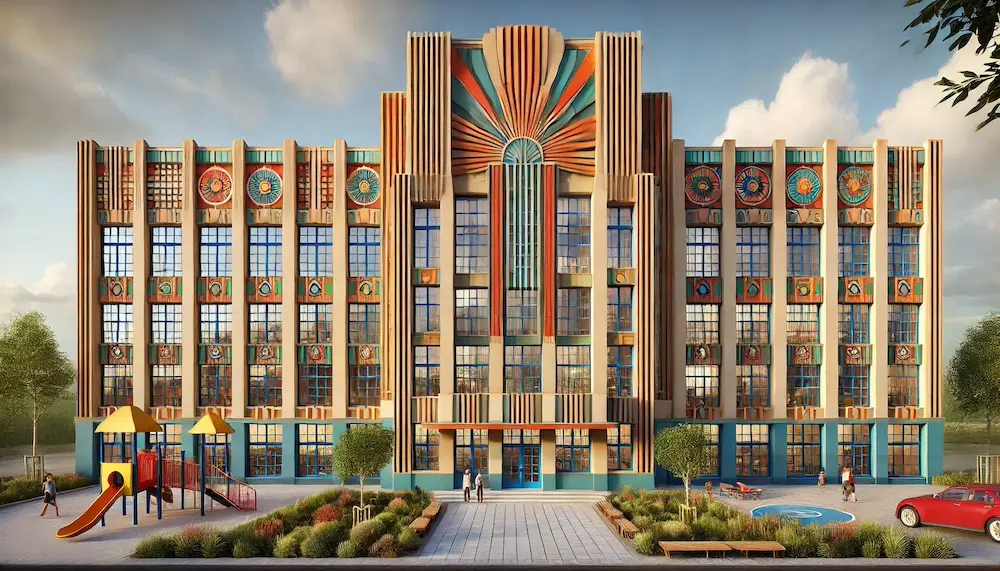Art Deco architecture, renowned for its geometric forms, decorative motifs, and emphasis on modernity, has significantly influenced the design of educational institutions, including elementary schools.
Introduction to Art Deco Elementary School Architecture
Emerging in the 1920s and 1930s, Art Deco architecture embraced modern materials and technologies, resulting in structures that were both functional and aesthetically striking. In elementary schools, this style introduced vibrant designs that departed from traditional architectural norms, reflecting the progressive educational philosophies of the era.
History and Origins of Art Deco Elementary School Architecture
The Art Deco movement originated in France and gained international prominence following the 1925 Exposition Internationale des Arts Décoratifs et Industriels Modernes in Paris. In the United States, the style was adopted for various public buildings, including schools, during a period of rapid urbanization and educational reform. Architects sought to create inspiring educational environments that embodied the spirit of progress and innovation characteristic of the Art Deco movement.
Key Features of Art Deco Elementary School Architecture
- Geometric Ornamentation: Incorporation of stylized motifs such as zigzags, chevrons, and sunbursts to enhance visual interest.
- Symmetry and Repetition: Balanced and repetitive design elements to create harmonious and orderly facades.
- Use of Modern Materials: Employment of steel, glass, and terra cotta to achieve sleek and durable structures.
- Vertical Emphasis: Design elements that draw the eye upward, conveying a sense of aspiration and growth.
- Decorative Reliefs and Murals: Artistic embellishments depicting educational themes or local culture to enrich the learning environment.
Applications of Art Deco Design in Elementary Schools
Several notable examples of Art Deco elementary schools include:
- Herman Ridder Junior High School: Located in the Bronx, New York, this school, opened in 1931, showcases Art Deco design with its modernistic style and decorative elements.
- Bryant-Webster Elementary School: Situated in Denver, Colorado, this school exemplifies Art Deco architecture with its geometric simplicity and handcrafted exterior details.
- Luther Burbank Elementary School: Located in Detroit, Michigan, this 1931 Art Deco school features multi-shaded brown brick and limestone detailing, with sculpted elements by Corrado Parducci.
Considerations When Choosing Art Deco Design for Elementary Schools
- Historical Significance: Art Deco schools often hold cultural and historical value, contributing to community identity.
- Preservation and Restoration: Maintaining the intricate details and materials of Art Deco architecture requires careful preservation efforts.
- Adaptability to Modern Needs: While aesthetically distinctive, these buildings may need modifications to meet contemporary educational standards and accessibility requirements.
- Community Engagement: Involving the community in preservation can foster a sense of ownership and appreciation for the school’s architectural heritage.
Conclusion
Art Deco architecture has left an indelible mark on the design of elementary schools, merging functionality with artistic expression. These structures not only serve educational purposes but also stand as monuments to an era that celebrated innovation and modernity. Preserving and appreciating these architectural gems enriches our cultural landscape and provides inspiring environments for future generations.
